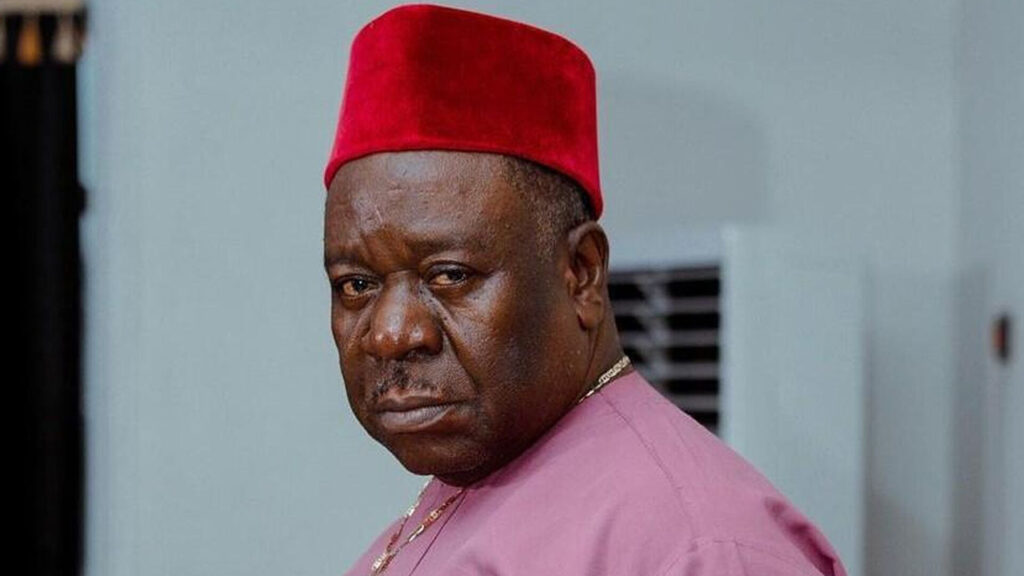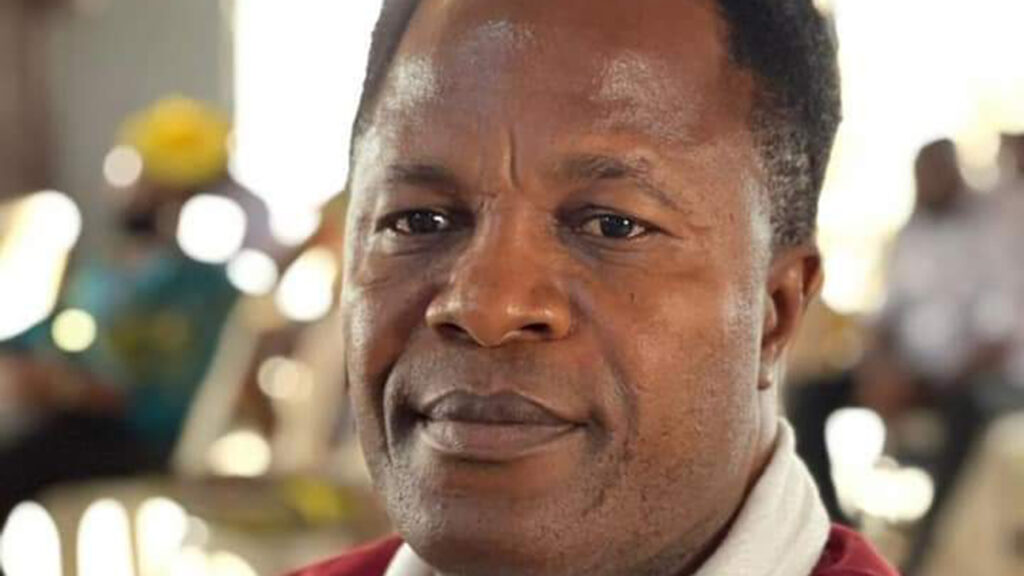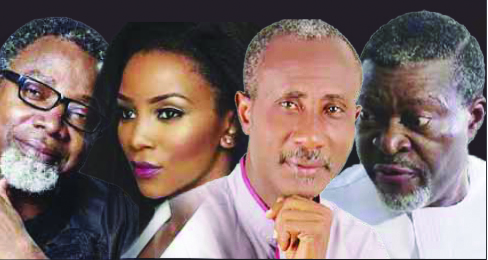
Some of Lagos’ main draws for tourists were the sculptures and paintings at the city’s many entry corridors, roundabouts, and intersections. But lately, such exquisite creations have been displaced or abandoned as relics. Quite baffling for residents and tourism enthusiasts, the state seems to have lost the zeal in curating an identity or maximising its tourism potential, FELICITAS OFFORJAMAH reports.
World-class cities are home to an abundance of imposing monuments, breathtaking sculptures, and creative statues. Landmarks in these cities have been a source of revenue, attracting millions of visitors around the world and preserving history that would have otherwise gone extinct if not for tourism.
New York’s Statue of Liberty rakes in the United States about $150 million dollars a year.
According to a Park Statistics done by the National Park Service in 2021, 1.6 million people visited the Statue of Liberty National Monument and Ellis Island, spending an estimated $101 million in the surrounding gateway regions.
A total of 1,110 jobs, $60.5 million in labour income, $98.3 million in value-added, and $149 million in economic production were supported by these expenditures in local economies. The number of people that visited the park in 2022 almost doubled to 3.1 million.
One of Dubai’s landmarks, the Burj Khalifa generated €697 million in revenue from ticket sales alone last year. That is possible with general admission entry tickets costing approximately €41 and over 17 million visitors touring the iconic structure.
Other collections of breathtaking, unique landmarks, like the Great Barrier Reef in Cairns, the Brandenburg Gate in Berlin, and the Eiffel Tower in Paris, are cherished and revered by both tourists and locals, and they serve as magnets for economic prosperity in the states where they are located.
However, Nigeria’s vibrant coastal metropolis, Lagos, with its monumental artifacts rakes in few nairas to the economy. The displacement, misplacement, and utter abandonment of the state’s artifacts, which could rake in billions, have worried tourist enthusiasts and citizens.
The three wise men
It will be recalled that in 1991, Governor Raji Rasaki hired famous sculptor Dr Bodun Sodeinde to help with the creation of a stunning and imposing statue that would greet guests to Lagos State.
After careful consideration of the customs surrounding welcomes in the past, Sodeinde chose to depict them with an image of a royalty salute, which is mostly used by elders and royals in Lagos, who are portrayed by the so-called “Three Wise Men.” The praise and applause, when it was commissioned, hoped to speak of something eternal, an enduring monument that spoke of the heritage of Lagos for years to come – that hope has become extinct.
Also known as Aro Meta, visitors to the state were usually fascinated by the images and are left with lasting memories as a result of their keen attention to detail and thoughtful consideration of the ideas conveyed by the etched images’ stance.
The statue of the “Three Wise Men” has been moved three times, first to the Magodo neighbourhood and then to the Ojodu-Berger end of the Lagos Ibadan Expressway. The image was finally moved to Olowopopo Drive, which is across from Michael Otedola Estate.
Over the years, the sculpture has also sustained significant damage and undergone up to three renovations. It was set on fire in 2012 by alleged protestors against the removal of gasoline subsidies. Additionally, the image was allegedly set on fire by those who said it was to blame for a string of tragic collisions on the Lagos-Ibadan expressway!
In addition to being aesthetically pleasing, art has a variety of purposes, including teaching, healing, and serving as a memorial for the younger generation to learn about history.
For the “Three Wise Men”, it has been subject to several interpretations that attempt to explain its meaning. According to some, the statues serve as a warning to first-time visitors to Lagos, who are known locally as “JJC—Johnny Just Come”—to put on their thinking caps, be alert and witty, and avoid being lazy. A common folktale states that the three wise men each have a different message for everyone entering the city of Lagos.
Renowned female visual artist, Ogochukwu Ejiofor, said that when she had arrived Lagos, she looked for the statue of three wise men to make sure she and her family were in Lagos.
“The government needs to understand the potential of monuments in relation to tourism. It’s funny that these same people go abroad and appreciate the artifacts and monuments overseas but they come back here and are at a loss.
“The monuments we have are not being taken care of at all. The ones we have that have impacted so many people’s lives, like the three wise men, are significant for Lagos, and see where they went to hide it? When I was small, when we were coming to Lagos, we looked out for that thing. That was the only thing that told us children that we were now in Lagos.”
Tafawa Balewa Square
The once-beautiful pride of Nigeria, Tafawa Balewa Square, has diminished to a ghost of its former glory. The Nigerian independence monument has not lived up to its potential as a top-tier tourism destination.
Formerly known as Lagos Race Course, it was a sports complex that held horse races in addition to a football field and a cricket ground. Oba Dosunmu gave the land to the colonial authorities in 1859, and they developed the neighboring territories after that.
Later, the Yakubu Gowon administration destroyed the course to create Tafawa Balewa Square. The track served as the site of the Empire Day parades during its peak.
The horse racing track measured one mile, or roughly seven to eight furlongs. To commemorate Nigeria’s independence and the lowering of the union jack, the course was redesigned in 1960.
Massive sculptures representing the national emblem’s symbols of strength and dignity, respectively—four white horses hovering over the gate and seven red eagles—guard the square’s entry. The Remembrance Arcade, which honors veterans of World War I, World War II, and the Nigerian civil war, and the 26-story Independence House, which was constructed in 1963 and was for a while Nigeria’s highest structure, are two more monuments in the square.
Sadly, it is being used to hold church crusades, events, and other gatherings in its dilapidating state. Street hawkers, food vendors, watch repairers, itinerant cobblers, hooligans, and commercial tricycle riders are seen in almost every turn, it just doesn’t seem that there is something of national value there.
This was the monument that the Federal Government had decided to redevelop into a world-class tourism destination and business centre through an agreement by concession.
The governor of Lagos State, Babajide Sanwo-Olu, declared in 2021 at a virtual investors’ forum hosted by the Bureau of Public Enterprises that the state would acquire 24 per cent equity in exchange for shares in a Special Purpose Vehicle created in collaboration with the concessionaires.

He further stated that the concession would last for 30 years and could be extended for an additional 30 years by the federal government. After two years, the deplorable condition of the square has not improved in any noticeable way. The government’s pledge to turn it into a premier tourist destination has remained a castle in the air.
The missing Fish of Ajah
Ajah, a town in Lagos surrounded by the border of water that links the Lagos lagoon to the Atlantic Ocean, was a home to a giant fish statue that adorned the Abraham Adesanya roundabout.
Fishing being the major occupation of the first settlers and a home for fishermen, the monument told tales of its residents without words.
However, the Lagos State Government, in February 2020, removed the big fish statue at the Abraham Adesanya Roundabout. This evoked tears in the eyes of some residents and tourist aficionados.
A carpenter, Bolaji Adams, who lived in the Ajah area, expressed concerns: “The government said it is to reduce traffic but that was a giant symbol for directions here. The fish is inside the roundabout. It has nothing to do with the traffic congestion. If you want to describe this Abraham Adesanya roundabout to a new person in Lagos, people will just say, ‘when you reach, you will see a big fish.’ That’s all. No too much talk. But now, you go explain tire.”
Another resident and tourist enthusiast, Emmanuella Ose, said that one of the things affecting tourism in the state is the government’s lack of continuity.
“One of Nigeria’s most unstable governments is that of Lagos State. Their planning is not consistent. If a single government performs admirably, the incoming administration will repeal it and enact its own. Lagos with all its benefits should be better than it is by now.”
Other monuments that adorn Lagos and not being utilized for the tourism sector includes the Statue of the African Handel – Fela, a liberation Statue unveiled on Fela’s 79th birthday, in 2017 by Akinwunmi Ambode built as a “form of respect and remembrance to the legend; what he stood for and fought for with his music; his mythology; struggle for freedom; fight for human dignity; social consciousness; courage and Pan-Africanism.” Others are the Iga Idungaran, the official residence of the Oba of Lagos, Jaekel House, a 2-storey colonial mansion in Ebute
Metta and various landmarks within the city.
Between the government and the governed
Some experts were at a crossroad on who to blame, the government or the masses. However, from their responses, both have a hand in the disappearance of art works and monuments in the state.
One of the residents, who begged to be anonymous, told The Guardian that “The hobby of Lagos State is demolishing. Every time they must demolish something, why won’t our artifacts and monuments get lost in the process? The government needs to sit down and know what they want. Do they want short-term rewards or tourism that would benefit everyone in the long run?”
However, an art collector, Philomena Iremiren, felt that the blame shouldn’t only fall on the government but on the citizens too.
“When these artworks were in their original position, how many of the residents in that area took time to care for it? Because first of all, they are the local owners of those monuments. It’s so bad that immediately an heritage statue is being put up at a roundabout or intersection, we see traditional worshippers dump sacrifices with calabashes and earthenware around.
“So, it’s not just the government all the time, though they have a role in sensitising citizens and enforcing policies for the sake of tourism,” she said.













